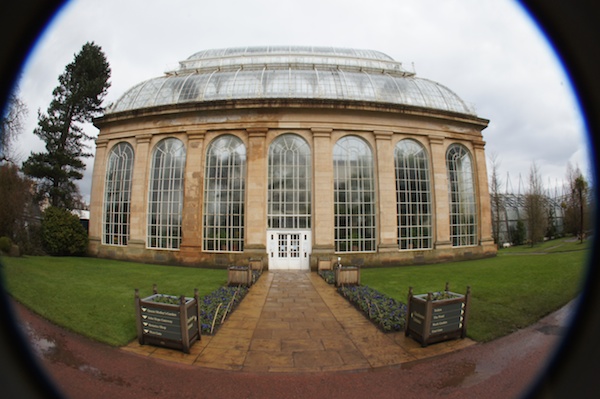Food Forever – photographic exhibition at the Botanics
A look at the fresh produce in your local supermarket will reveal the usual suspects. Familiar favourites like Little Gem lettuce, Maris Piper potatoes and Royal Gala apples dominate our shelves, but does this lack of choice really matter?
A new photographic exhibition – Food Forever – at the Royal Botanic Garden Edinburgh (RBGE) says that diversity is important and is putting the spotlight on the need to conserve and promote diversity in food as a source of resilience in the food system.
The exhibition, which opens on Saturday, 6 April 2019, includes portraits of scientists, farmers and chefs working to ensure that we protect the vast colourful spectrum of diversity in our food.
Dr Max Coleman of RGBE said : “In effect they are all champions of diversity.
“Variety in our foods is part of the pleasure of eating, but there is also a more serious message in the exhibition about securing food supplies in a rapidly changing world’’, he added.
Food insecurity is created by many factors, but changes in local climate, declines in pollinating insects and the spread of pests and diseases are among the main causes.
He added : “Factors threatening to disrupt the steady supply of food are very real. Recognising the value and role of diversity in meeting the challenges is summed up by the old saying about not putting all your eggs in one basket.”
Relying on a single crop or a very limited amount of genetic diversity is risky, and diversity in farming acts to spread the risk of failure. Extensive ‘monocultures’ of single crops are common in modern intensive farming and this approach does make our food system vulnerable to rapid change, such as the emergence of a new pest or disease.
As well as showcasing the work of food diversity “champions” in Scotland, and elsewhere around the world, the exhibition is part of a wider initiative led by the Crop Trust that encourages everyone to play their part. Consumer food choices make a big difference to research, innovation and what is actually being produced by farmers.
“As consumers, if we stick to what we know and don’t buy new or unfamiliar fresh produce it is hard for farmers to make the switch to new crop varieties that might have benefits, such as greater resilience’’, said Dr Coleman.
SEFARI, the Scottish collective of environment, food and agriculture research institutes, is also supporting the exhibition and six of the 18 portraits feature people who work for SEFARI. Among them is Dr Madalina Neacsu, at the Rowett Institute, who is looking at the use and health benefits of unfamiliar crops that can be grown in Scotland. The aim is to encourage a greater diversity of plants in the diet, which in turn can encourage farm diversification.
At the James Hutton Institute, researchers Dr Ingo Hein and Dr Joanne Russell have a focus on the role of specific genes in crops. Dr Ingo Hein is identifying genes that provide resistance to late blight in potatoes, and Dr Joanna Russell is exploring the genetic basis of nutrient uptake in barley. Both of these lines of research could reduce the need for chemical inputs and make farming more sustainable.
Alongside work on these two traditional Scottish crops, Dr Susan McCallum, also at the James Hutton Institute, is leading a drive to create new varieties of blueberry suited to local conditions through a breeding programme involving the related native blaeberry. This would give UK farmers more opportunity to take advantage of the high demand for blueberries and reduce food miles into the bargain.
At RBGE, biodiversity scientist Dr Tiina Sarkinen is leading research on the diversity of the potato family and is looking at the wild plants related to a number of familiar crops including potatoes, tomatoes, eggplants and the less familiar black nightshades. These so called Crop Wild Relatives could hold the key to solving the problems that our crops will face as the world continues to change. “The ability to feed people in a changing world will rely on genes present in naturally resilient wild relatives of crop plants” said Professor Peter Hollingsworth, RBGE’s Director of Science.
Genetic diversity as a source of resilience is not something restricted to crops. Research at Moredun on genetic diversity in livestock is aimed at improving the health and welfare of animals whilst minimising the use of drugs and pesticides. “SEFARI research aims to secure the supply of healthy and sustainable food through an integrated approach to agriculture, environment, food, health and the economy” said Dr Charles Bestwick, Interim Director of SEFARI.
Cataloguing the diversity in farmer’s fields and the wild is only the first step.
Seeds stored in specialised facilities, called ‘genebanks’, provide material for crop breeders and act as an insurance against extinction. The ultimate back-up is provided by the Svalbard Global Seed Vault. This state-of-the-art storage facility is carved out of the permafrost in Svalbard to keep seeds at low temperatures to prolong life. The Vault is operated by the Crop Trust, the Norwegian Government and the Nordic Genebank for the benefit of all humankind.
“Safeguarding a huge range of seeds in the Svalbard Global Seed Vault means scientists will have the best chance of developing nutritious and climate-resilient crops” said Marie Haga, Executive Director of the Crop Trust.
Food Forever can be seen at RBGE’s John Hope Gateway from Saturday 6 April to Sunday 9 June. Entry is free.
